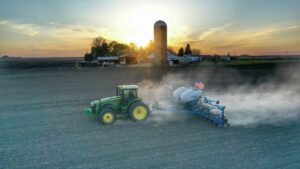After learning what types of data you can find in your lab and field, the next step ensuring actionability. While that might sound like a big step, it’s manageable with one key ingredient: planning.
No matter what technology you’re working with, there’s always a learning curve. And understanding what data to obtain and what to do with it all comes down to what your plan is to use it.
“It depends on what [growers] are trying to do,” says Robbie Weathers, product manager of Data Inwith Granular, Corteva’s flagship brand of farm management software. “It all depends on what they’re getting out of it and what they’re trying to get out of it — the growth curve needs to start before they get to the field and put the files in.”
Unfortunately, this is the step that Weathers says most customers miss.
“You’ve got to lay out the plan and get everything set up before you get in the field,” he says. “If you get to the field with a file and try to make it work at that time, you’ve already lost the battle and everyone’s going to be frustrated trying to go.”
To minimize confusion and frustration, ensuring grower customers have a plan outright is important. That will mitigate pain in the future and being overwhelmed by the data received.
In addition to creating a solid plan before getting in the field, Steve Cubbage says one way to make data management easier is on the analyzer’s side: making data simple and easy to collect as well as standardizing and automating it as much as possible.
“Getting that data literally out of the field in real time and being able to deliver it to whatever platform is important,” Cubbage, vice president of data services for AGI’s Farmobile. “So, I always ask the questions: ‘How portable is your data? Can you lay your hands on it and do you have control over it?’ It truly goes back to what Robbie talked about — laying the groundwork.”
Part of the difficulty with this, though, is a lot of grower customers haven’t had access to enough education on the subject — instead, there’s been a typical “jump right into it” mindset.
“Sometimes, it starts as simple as having field boundaries for that data to flow into, because one of the typical frustrations from customers is they don’t realize they don’t even have an exportable set or portable set of field boundaries that can be used,” Cubbage says. “You don’t want data to be pigeonholed into some PC system where it’s just going to retire and not be used.”
From the lab side, Sebastian Schultheiss, managing director of Computomics, says being adaptable to different data types is key.
“Everybody does things a little differently,” he says. “That means, we have to adapt our methods to make sure we’re properly importing the different types of datasets that people are delivering.”
From there, with a plan in place for your datasets, it’s imperative to understand how to make your data actionable to learn from it in the future.
Want to read more about data? Check out:
What Types of Data are on Your Operation?
How Can Big Data Teach Plants To Talk?, A Seed World Strategy Webinar
Turn Data into Action for Better Breeding













